Autism - Symptoms
Core symptoms
The severity of symptoms varies greatly between individuals,
but all people with autism have some core symptoms in the
areas of:
Social interactions and relationships.
Symptoms may include:
Significant problems developing nonverbal communication
skills, such as eye-to-eye gazing, facial expressions,
and body posture. Failure to establish friendships with
children the same age. Lack of interest in sharing enjoyment,
interests, or achievements with other people.Lack of empathy.
People with autism may have difficulty understanding another
person's feelings, such as pain or sorrow.
Verbal and nonverbal communication.
Symptoms may include:
Delay in, or lack of, learning to talk. As many as 40% of
people with autism never speak. Problems taking steps to
start a conversation. Also, people with autism have difficulties
continuing a conversation after it has begun. Stereotyped
and repetitive use of language. People with autism often
repeat over and over a phrase they have heard previously
(echolalia). Difficulty understanding their listener's
perspective. For example, a person with autism may not
understand that someone is using humor. They may interpret
the communication word for word and fail to catch the implied
meaning.
Limited interests in activities or play.
Symptoms may include:
An unusual focus on pieces. Younger children with autism
often focus on parts of toys, such as the wheels on a car,
rather than playing with the entire toy. Preoccupation with
certain topics. For example, older children and adults may
be fascinated by video games, trading cards, or license plates.
A need for sameness and routines. For example, a child with
autism may always need to eat bread before salad and insist on
driving the same route every day to school. Stereotyped
behaviors. These may include body rocking and hand flapping.
Symptoms during childhood
Symptoms of autism are usually noticed first by parents and
other caregivers sometime during the child's first 3 years.
Although autism is present at birth (congenital), signs of
the disorder can be difficult to identify or diagnose during
infancy. Parents often become concerned when their toddler
does not like to be held; does not seem interested in playing
certain games, such as peekaboo; and does not begin to talk.
Sometimes, a child will start to talk at the same time as
other children the same age, then lose his or her language s
kills. They also may be confused about their child's hearing
abilities. It often seems that a child with autism does not
hear, yet at other times, he or she may appear to hear a
distant background noise, such as the whistle of a train.
With early and intensive treatment, most children improve
their ability to relate to others, communicate, and help
themselves as they grow older. Contrary to popular myths
about children with autism, very few are completely socially
isolated or "live in a world of their own."
Symptoms during teen years
Autism - Symptoms
During the teen years, the patterns of behavior often change.
Many teens gain skills but still lag behind in their ability
to relate to and understand others. Puberty and emerging
sexuality may be more difficult for teens who have autism than
for others this age. Teens are at an increased risk for
developing problems related to depression, anxiety, and
epilepsy.
Symptoms in adulthood
Some adults with autism are able to work and live on their own.
The degree to which an adult with autism can lead an
independent life is related to intelligence and ability to
communicate. At least 33% are able to achieve at least partial
independence.Some adults with autism need a lot of assistance,
especially those with low intelligence who are unable to speak.
Part-or full-time supervision can be provided by residential
treatment programs. At the other end of the spectrum, adults
with high-functioning autism are often successful in their
professions and able to live independently, although they
typically continue to have some difficulties relating to other
people. These individuals usually have average to
above-average intelligence.
Other symptoms
Many people with autism have symptoms similar to attention
deficit hyperactivity disorder (ADHD). But these symptoms,
especially problems with social relationships, are more
severe for people with autism. For more information, see
the topic Attention Deficit Hyperactivity Disorder.
About 10% of people with autism have some form of savant
skills-special limited gifts such as memorizing lists,
calculating calendar dates, drawing, or musical ability.
Many people with autism have unusual sensory perceptions.
For example, they may describe a light touch as painful
and deep pressure as providing a calming feeling. Others
may not feel pain at all. Some people with autism have
strong food likes and dislikes and unusual preoccupations.
Sleep problems occur in about 40% to 70% of people with
autism.
Other conditions
Autism is one of several types of pervasive developmental
disorders (PDDs), also called autism spectrum disorders
(ASD). It is not unusual for autism to be confused with
other PDDs, such as Asperger's disorder or syndrome, or
to have overlapping symptoms. A similar condition is
called pervasive developmental disorder-NOS (not otherwise
specified). PDD-NOS occurs when children display similar
behaviors but do not meet the criteria for autism. It is
commonly called just PDD. In addition, other conditions
with similar symptoms may also have similarities to or
occur with autism.
skip to main |
skip to sidebar

Time For Church

What A CUTE Boy...!
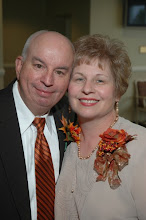
Happily married 30 years


Jad, Rachelle, Paul, Amy, Daniel with Ginger and Wrigley

A lot of Ups and Downs but always Together.

A DREAM that is almost ready to come true ( Our Book)

Sold our book at the Ladies Conference
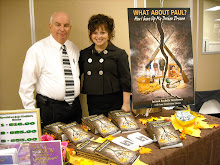
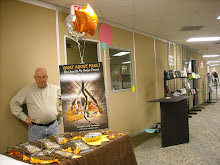
Jad setting up our display

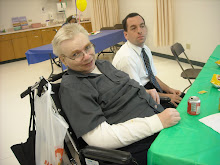
.jpg)
Guess who Santa is? (Bro. Judson Mitchell)




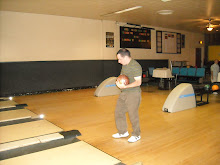
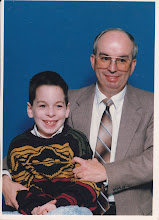
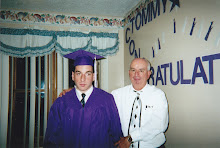

Amy at Paul's Graduation from High School

At Our Thrift Store


I Love Fishing
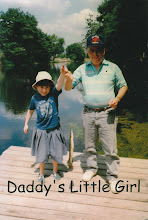

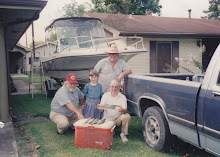


I Even Caught One!



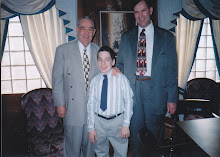
Picture Taken In Bro. Hyles Office- Bro. Hyles SO...Graciously Agreed to This!!!
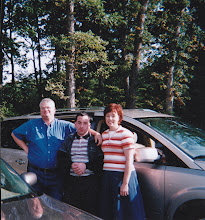
Thank You for All your help with Paul


Our daughter and son in law on their wedding day
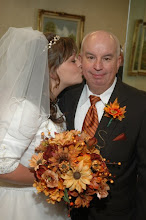
Dad and Amy
.jpg)
Mom and Amy

Paul and Amy

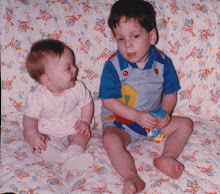.jpg)
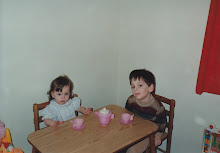.jpg)
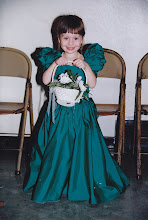
A Flower Girl
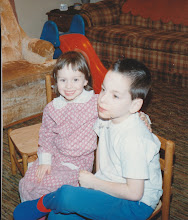.jpg)
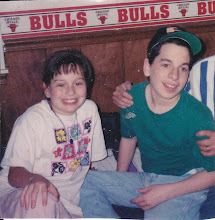
At Paul's First Group Home
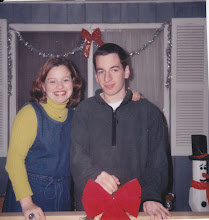.jpg)
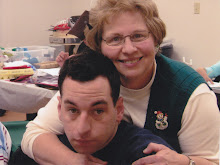
Paul, I love you son and I'm So...proud of you! Mom



This has been a twenty-nine year journey. Just as Enoch walked with God, my wife and I have walked this journey with our Lord and Saviour Jesus Christ. Through the ups and downs of it all, He has always been faithful. Let us share with you how God replaced our broken dreams with hope and promises from his word. May this site encourage you to believe,"For with God nothing shall be impossible." Luke 1:37
To Contact Us
Paul Michael Terrebonne

Time For Church
Paul and Mommy

What A CUTE Boy...!
Finally Updated Our Blog!!!
So...grateful for this blog and the opportunity to give our testimony about our son, Paul. Our prayer is that the blog will be a blessing to you and your family and hopefully it will he a help to those families that have a disable child or adult. Our Son, Paul, is now 28 years old, and has gone though many, many issues. PLEASE pray for Paul and God's leading in his life!
May you prayerfully take our journey with us...
So Much More!!!
There is So...more in our book than is in this
blog...you will read about the stuggles that we faced
as we tried to rear Paul with his disabilities and still tried to keep our Christian testimony. You will be surprised and blessed when you open its pages! It is now being sold at our church's bookstore!!! Also there are now three pages on this blog with lots of info on the second and third one.
We Hope and Pray This Site Will Be a Blessing And A Help To ALL!!!
To Order Our Book On Amazon.com
What About Paul? How I have Up My Broken Dreams
By Jad Terrebonne
Jad and Rachelle Terrebonne

Happily married 30 years
Who are we?

- Jad and Rachelle Terrebonne
- I was born in Houma, Louisiana. I joined the Navy after attending college for one year. Two years later, I trusted Jesus Christ as my Saviour. I met my wife Rachelle at Hyles-Anderson College. She is originally from Paw Paw, Michigan. She attended and was saved at Covey Hill Baptist Church. Den Karrow was her pastor. December 26, 1980 we were married at the First Baptist Church in Hammond. Dr. Jack Hyles preformed the wedding vows. God has blessed us with two wonderful children. Paul, our son is now 26. He was born with many disabilities. God has always been faithful in caring for him. Amy, our daughter is 24. She graduated from Hyles-Anderson College. She was married on November 1, 2008 to Daniel Luarca. He is attending Hyles-Anderson College now and will graduate next year.
How To Know 100% For Sure That You Would Go To Heaven.
You can know: 1 John 5:13
"These things have I written unto you that believe on the name of the Son of God; That Ye May Know that ye have eternal life, and that ye may believe on the name of the Son of God."
1. WE ARE ALL SINNERS Who is good? Romans 3:10, "As it is written, There is none righteous, no, not one."Who has sinned? Romans 3:23 "For all have sinned and come short of the glory of God."
2. WHERE SIN CAME FROM Romans 5:12 "Wherefore, as by one mans sin entered into the world, and death by sin, and so death passed upon all men, for that all have sinned." (One man-the first man, Adam) Revelation 20:14 "and death and hell were cast into the lake of fire. This is the second death." (The word death in this verse means Hell)
3. GOD'S PRICE ON SIN Romans 6:23 "For the wages of sin is death, but the gift of God is eternal life through Jesus Christ our Lord."
4. OUR WAY OUT Romans 5:8 "But God commendeth His love toward us, in that, while we were yet sinners, Christ died for us."Romans 10:13, "For whosoever shall call upon the name of the Lord shall be saved."Romans 10:9-11, "That if thou shalt confess with thy mouth the Lord Jesus,and shalt believe in thine heart that God hath raised him from the dead, thou shalt be saved. For with the heart man beieveth unto righteousness; and with the mouth confession is made unto salvation. For the scripture saith, Whosoever believeth on Him shall not be ashamed. 'YOU MUST ASK IN FAITH-Hebrews 11:6, But without Faith it is impossible to please Him: for he that cometh to God must believe that He is, and that He is a rewarder of them that deligently seek Him. " Ask Jesus to Save You Now.
(Sample Prayer) Dear Jesus, I know that I am a sinner; if I died now in my sin, I would go to Hell. Right now, by faith, I am trusting you as my personal Saviour and my only hope for Heaven. Thank you for dying on the cross for me and for saving me from an eternity in Hell. In Jesus' name, Amen! If you did say this prayer amd really meant it, God says you can be 100% for you will go to Heaven. God Bless You and try to go to a Good Bible believing church in your area!!!
"These things have I written unto you that believe on the name of the Son of God; That Ye May Know that ye have eternal life, and that ye may believe on the name of the Son of God."
1. WE ARE ALL SINNERS Who is good? Romans 3:10, "As it is written, There is none righteous, no, not one."Who has sinned? Romans 3:23 "For all have sinned and come short of the glory of God."
2. WHERE SIN CAME FROM Romans 5:12 "Wherefore, as by one mans sin entered into the world, and death by sin, and so death passed upon all men, for that all have sinned." (One man-the first man, Adam) Revelation 20:14 "and death and hell were cast into the lake of fire. This is the second death." (The word death in this verse means Hell)
3. GOD'S PRICE ON SIN Romans 6:23 "For the wages of sin is death, but the gift of God is eternal life through Jesus Christ our Lord."
4. OUR WAY OUT Romans 5:8 "But God commendeth His love toward us, in that, while we were yet sinners, Christ died for us."Romans 10:13, "For whosoever shall call upon the name of the Lord shall be saved."Romans 10:9-11, "That if thou shalt confess with thy mouth the Lord Jesus,and shalt believe in thine heart that God hath raised him from the dead, thou shalt be saved. For with the heart man beieveth unto righteousness; and with the mouth confession is made unto salvation. For the scripture saith, Whosoever believeth on Him shall not be ashamed. 'YOU MUST ASK IN FAITH-Hebrews 11:6, But without Faith it is impossible to please Him: for he that cometh to God must believe that He is, and that He is a rewarder of them that deligently seek Him. " Ask Jesus to Save You Now.
(Sample Prayer) Dear Jesus, I know that I am a sinner; if I died now in my sin, I would go to Hell. Right now, by faith, I am trusting you as my personal Saviour and my only hope for Heaven. Thank you for dying on the cross for me and for saving me from an eternity in Hell. In Jesus' name, Amen! If you did say this prayer amd really meant it, God says you can be 100% for you will go to Heaven. God Bless You and try to go to a Good Bible believing church in your area!!!
Christmas card

Jad, Rachelle, Paul, Amy, Daniel with Ginger and Wrigley
Our Marriage

A lot of Ups and Downs but always Together.
Daily Blessing
Followers
-Special Needs Blogs-
Friend's Blogs
What About Paul-How I Gave Up My Broken Dreams

A DREAM that is almost ready to come true ( Our Book)
Favorite Websites
Our Table-"What About Paul?"

Sold our book at the Ladies Conference
Jad and Amy at our table

Other Great Websites
- GRACE UPON GRACE
- Raising Homemakers
- happytrails365
- The Time-Warp Wife
- Sharing The Son
- HappyTrails365
- Keep The Heart
- Life's Little Slices
- The Better Mom
- Keever Story Time
- Hear My Heartbeat
- Busy Blessings
- A Glimpse In The Life Of The Life Harris Family
- The Seth Benjamin Foundation
- Scott and Kristi Mercer
- North Valley Baptist Church
- Emmanuel Baptist Church
- Learning God's Lessons
- Daily In The Word
- Wonderful Words Of Life
- Olathe View Baptist Church
- Dianna's Diary
- Ladies of Grace
- Journel For Women
- Welcome To Harmony Hill
- A Journey of Grace
- Me, Chloe and my boys!
- PAULCHAPPELL.COM
- A Life Worth Living
- Journey To Beloved
- Regions Beyond Baptist Ministries - Honduras
- Farley Family Fun
- Cup Of Coffee With Mike Mulchler
"What About Paul?"

Jad setting up our display
My Dad, Amy and Me

Paul and Craig (my brother)

Paul and Amy with Santa
.jpg)
Guess who Santa is? (Bro. Judson Mitchell)
Helpful Websites
- Ella ellavines whimsy Inc.
- Ideas
- Big Red Kitchen
- Gold Medal Flour
- Andrea's Country Home Cookin
- food wishes
- A Little Learning for two
- Simply Southern At Heart
- MARTHASTEWART
- Gina's SKINNY RECIPES
- The Daily Dish Recipes
- Campbell'sKitchen
- Pillsbury Baking
- Betty Crocker
- tasteofhome
- Kraft
- The Southern Lady Cooks!
- Sweet Tea and Cornbread
- Incredible Recipes
- Nan's Home Cooking
- Simply Gourmet
- Betty Crocker
- Our Happy Little Homestead
- Mindful Fruitful Mom
- Nebraska Views
- Cooking For My Peace Of Mind
- Dixie Cajun's Creations
- Hear My Heartbeat
- The Bishop's Wife
- Heavenly Homemakers
- Simple Recipes
- Dressing For His Glory
- Always Living Frugally
- Cooking With The Preacher's Wife
- Tipnut
- ChristArt
- Vocal Point
- We Use Coupons.com
- Living On A Dime




Paul Loves Bowling!

Dad and Paul

Dad and Paul after Paul's High School Graduation

Paul and Amy

Amy at Paul's Graduation from High School
Paul At Lunch Break

At Our Thrift Store
Thy Word is a Lamp unto my feet, and a Light unto my path

I Love Fishing
Daddy And Amy Fishing On The Bayou

Look Dad, how many fish I caught!

Amy, Dad and HIs Family From Louisiana

I Love Going Fishing With My Dad

Fishing In Lake Boudreaux

I Even Caught One!
Isaiah 43:16 Thus saith the LORD, which maketh a way in the sea, and a path in the mighty waters

Our Church

Inside Our Church

Blog Archive
-
▼
2008
(51)
-
▼
December
(51)
- Won Another Soul To Christ
- How I Gave Up My Broken Dreams
- We Had A Baby
- Heaven's Very Special Child
- Special Children
- Our Journey Begins-
- The Doctors Examination
- Physical Therapy
- Soul Winning
- We Had Another Baby-
- Would Our Second Child Have Problems?
- Thank You Lord
- Quotes
- It's In the Valleys I Grow
- Blessing-May 23, 2009
- Special Olympics
- Puppies For Sale
- "What About Paul?"
- People Need The Lord-Mrs. Beverly Hyles
- Happy Birthday Mrs. Beverly Hyles!
- Happy Birthday Mrs. Cindy Schaap!
- Autism Symptoms
- Helen Keller Quotes
- God Is So Good
- Another Parent's Point of View
- What You Should Know About My Child
- Why
- God Has A Positive Answer
- Welcome To Holland
- Holland
- Celebrating Holland-I'm Home
- To The Handicapped By Dr. Jack Hyles
- Decisions About Paul
- Our Meeting with Bro. Hyles
- Visit Possible New Home For Paul
- Paul Was Accepted At Facility
- Look Through It And See God
- Prayer Quotes
- Another Problem Occured-A Brain Tumor
- Storms
- God's Timing
- Why Me?
- Anointed With Oil
- Surgery Day-January 31, 1990
- Thank You Starr
- Thank You Sherry
- Trust
- GOLD
- Ron Hamilton-Patch the Pirate
- Trust And Obey-My Favorite Hymn
- Other Sites That I Have Found
-
▼
December
(51)
Bro. Hyles and Tom Atchison with Paul

Picture Taken In Bro. Hyles Office- Bro. Hyles SO...Graciously Agreed to This!!!
John and Diane Wilson With Paul

Thank You for All your help with Paul
Daniel and Amy

Daniel and Amy Luarca

Our daughter and son in law on their wedding day
Amy's Wedding Day

Dad and Amy
Amy's Wedding Day
.jpg)
Mom and Amy
Amy's Wedding Day

Paul and Amy

-God's Promise-
God Has Unconditonal
Love. God Is Always There.
The Truth Of God's Love
Is Not That He ALLOWS
Bad Things To Happen,
It's His Promise That
He'll Be There With Us
When They Do!
Love. God Is Always There.
The Truth Of God's Love
Is Not That He ALLOWS
Bad Things To Happen,
It's His Promise That
He'll Be There With Us
When They Do!
Paul and Amy
.jpg)
Paul and Amy
.jpg)
Amy

A Flower Girl
Paul and Amy
.jpg)
Paul And Amy

At Paul's First Group Home
Paul and Amy
.jpg)
Paul and Mom

Paul, I love you son and I'm So...proud of you! Mom
Jad In The Naval Reserve



-Hits To Our Site-
There were so many hits to our site they started it over. Of course we are So...happy for this. This is ALL for God's Glory! Thank You So...Much!!! Please pray that a Christian adult home can be started for the disabled!


